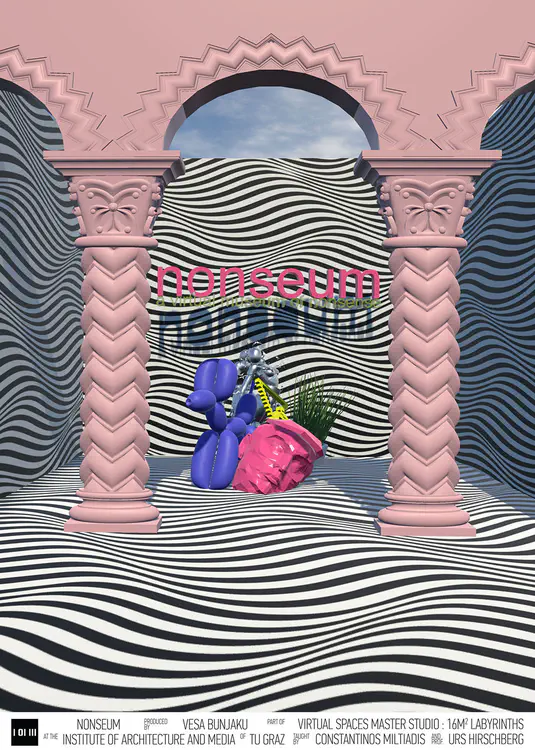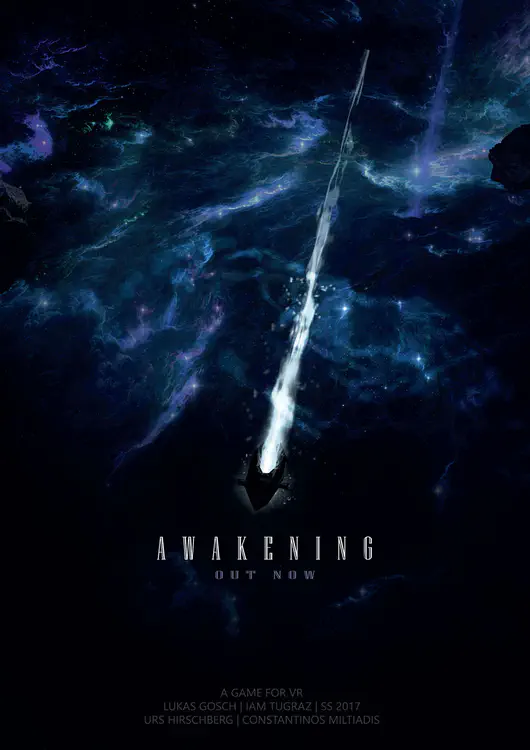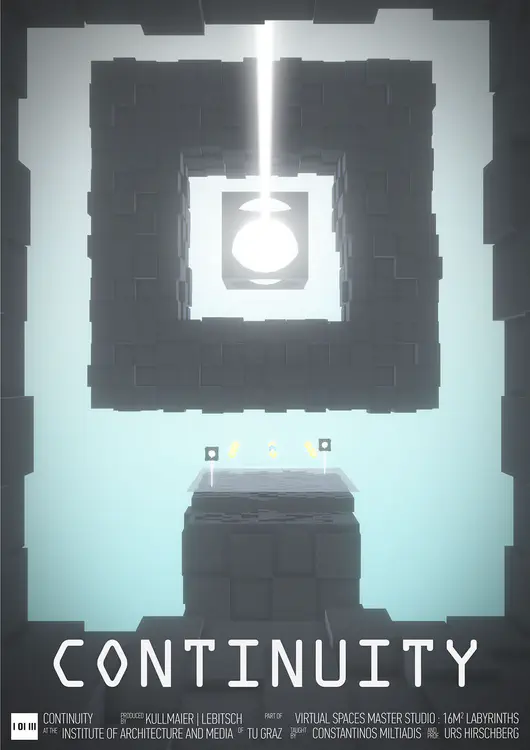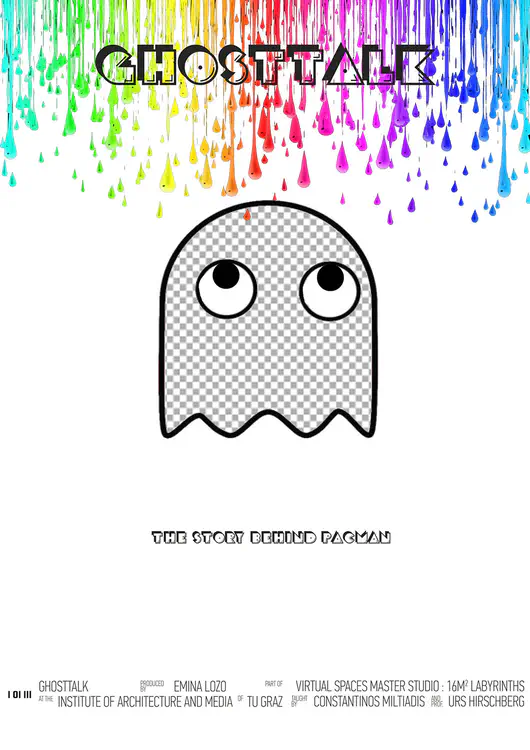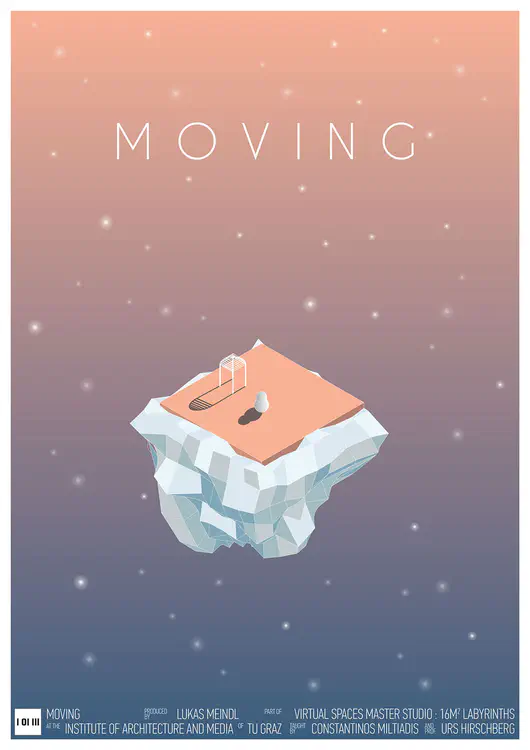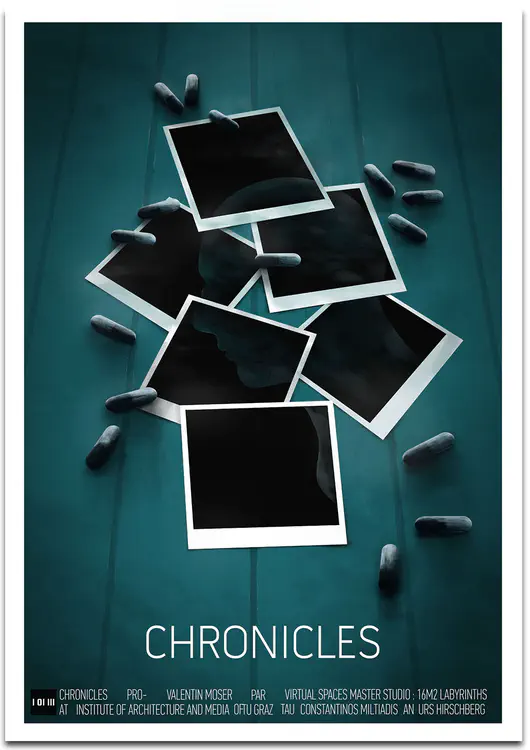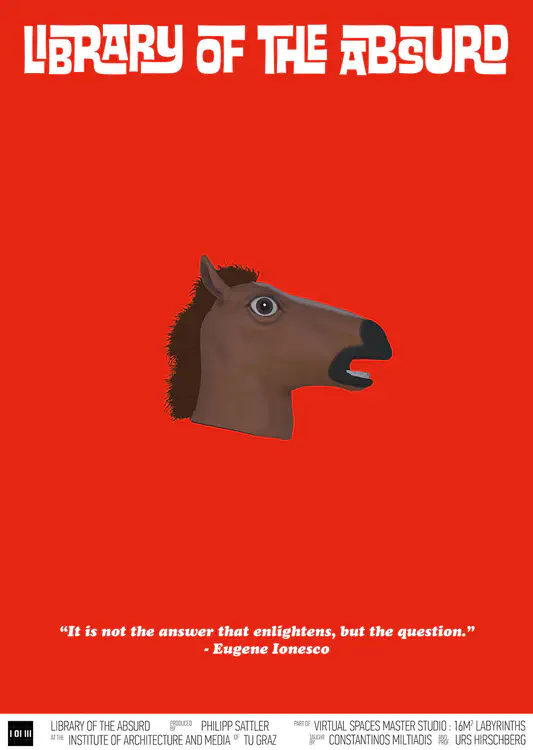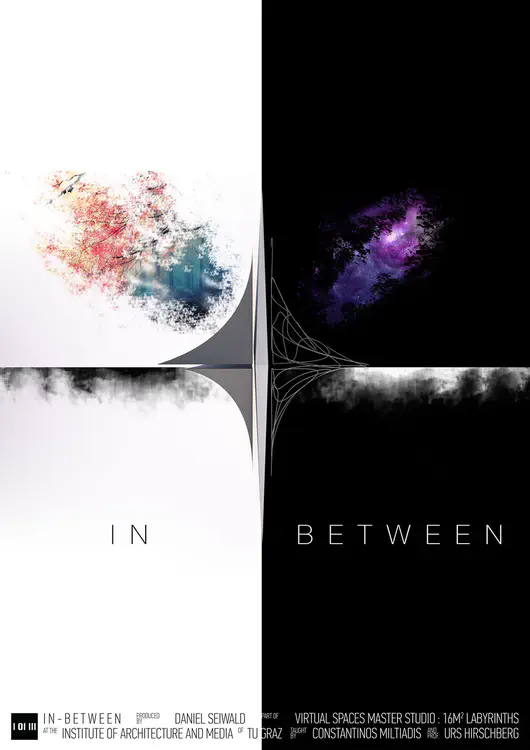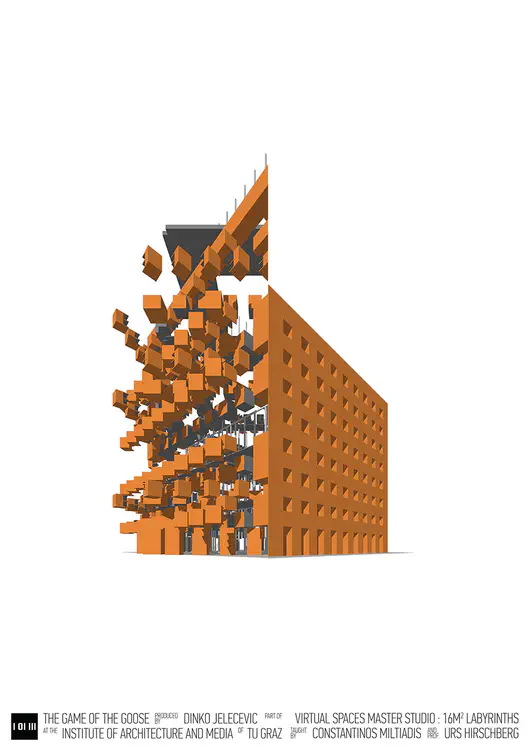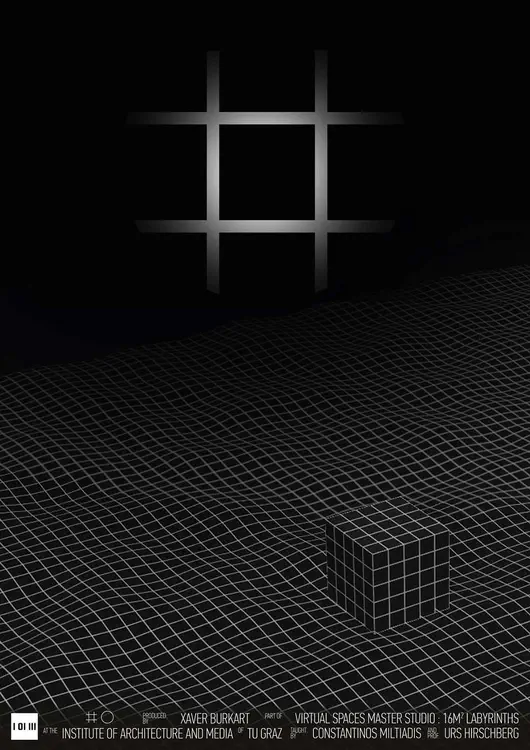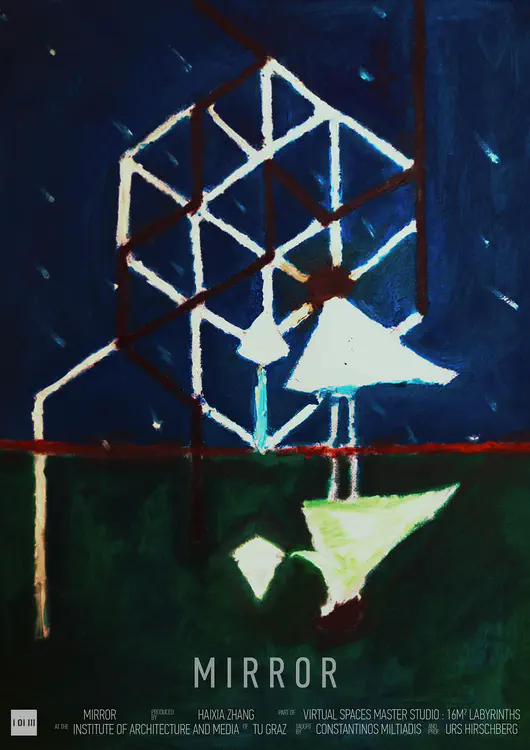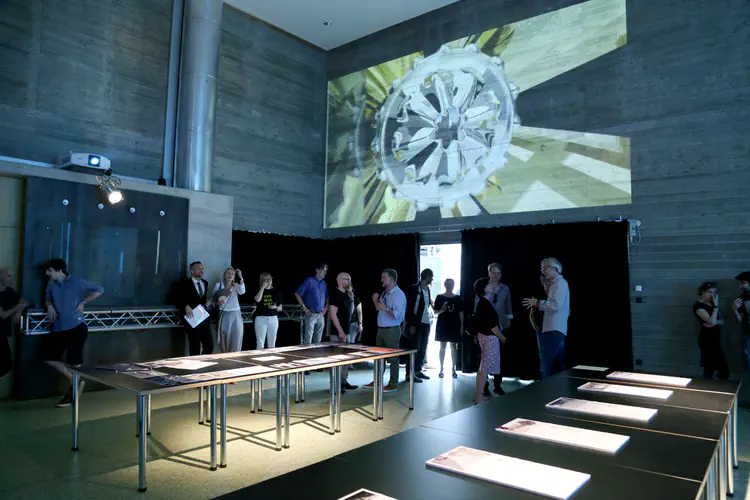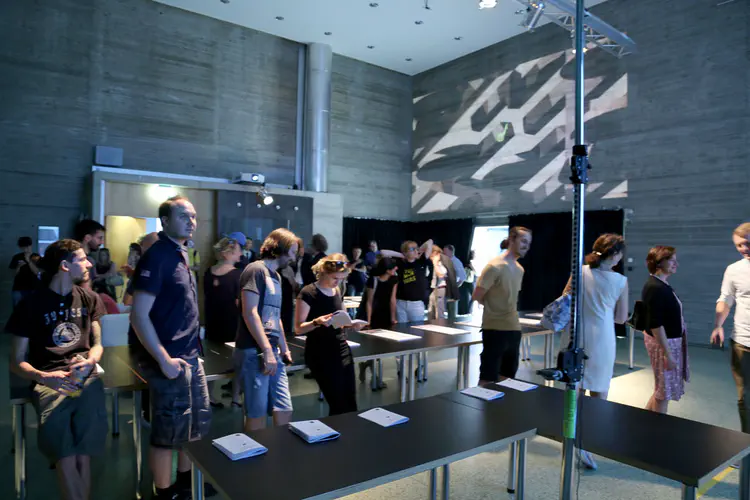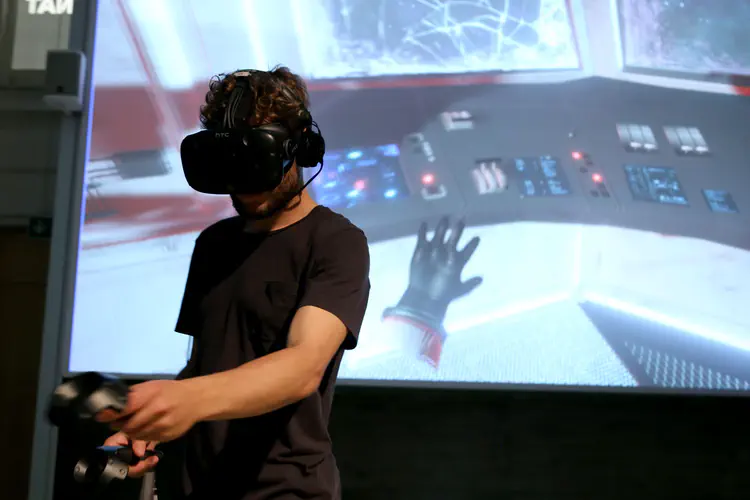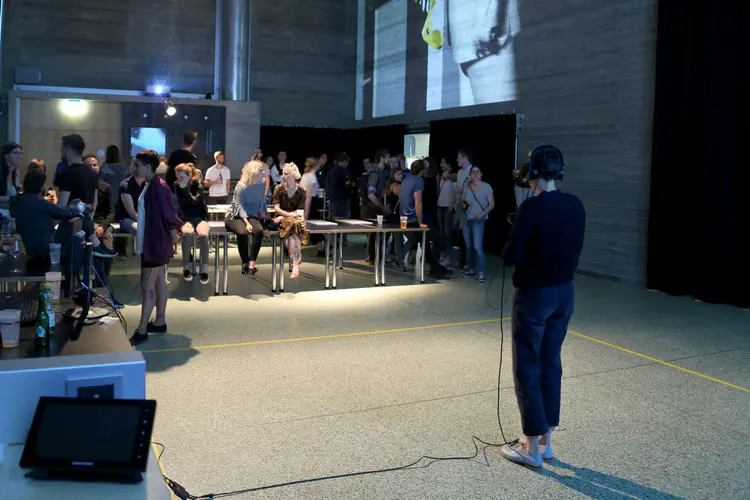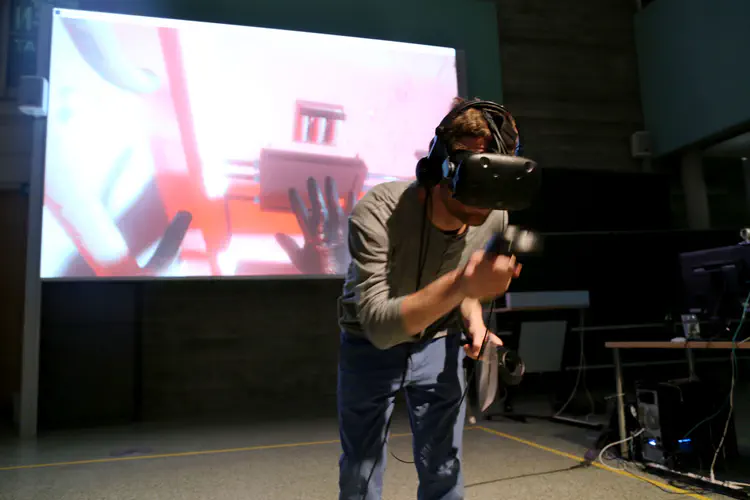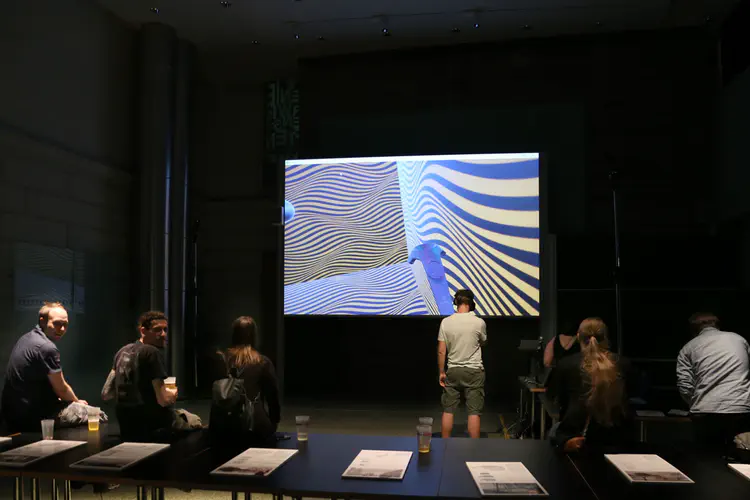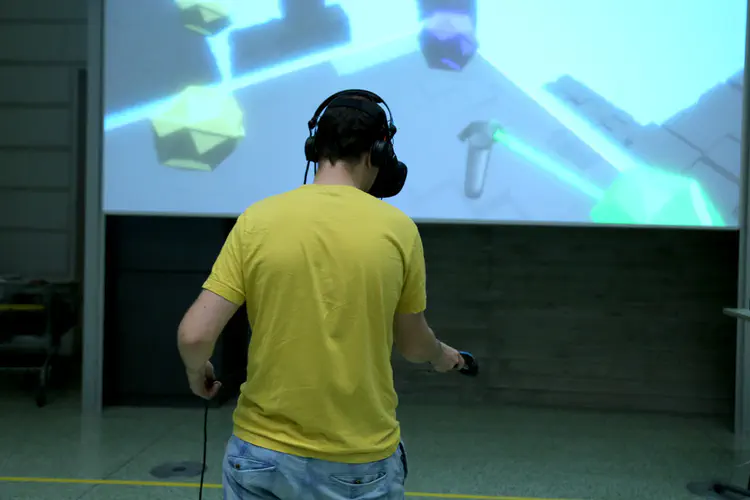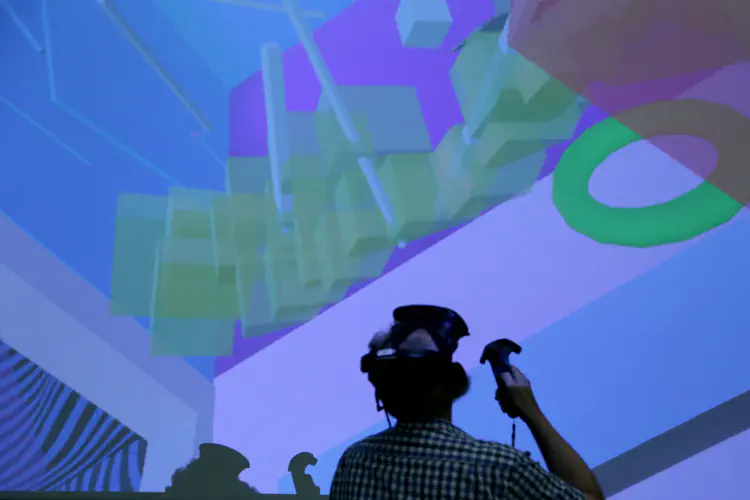Virtual Spaces Master Studio: 16m2 labyrinths
Master design studio module. Institute of Architecture and Media, TU Graz, 2017
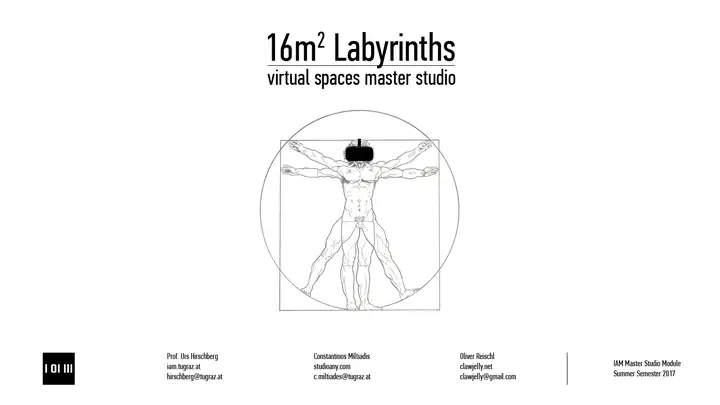
Table of Contents
Outline
Course designer and lead teacher for the Virtual Spaces Master Studio module (16 ECTS) at the Institute of Architecture and Media, TU Graz, during the summer semester of 2017. The objective of the studio was to introduce virtual reality as a medium for experimental design, and to explore designing virtual environments in both space and time. At the end of the semester each student produced, presented, and exhibited a VR experience for the HTV Vive.
| Course outline | |
|---|---|
| Type | Master studio module; academic; master level |
| Module courses | Master design studio Digital Form and Motion elective Interdisciplinary Media elective |
| Context | Institute of Architecture and Media, TU Graz |
| Module credits | 16 ECTS |
| Duration | Full semester (summer semester 2017) |
| Participants | 13 architecture students |
| Deliverables | Individual VR application (HTC Vive); video presentation; documentation booklet |
| Exhibitions | Graz Open Architecture Day; VR Playful Art at Kunsthaus Graz |
Course information
Course Description
Virtual Spaces Master Studio: 16m2 Labyrinths is an intensive and experimental master design studio module offered by the Institute of Architecture and Media, Faculty of Architecture, TU Graz. As with VSMS 2016, the course developed as final output interactive Virtual Reality applications in the format of videogames, focusing on perceptible and immaterial spatial concepts and experiences. The 2017 VSMS is titled “16m2 Labyrinths” given the physical space constraints (4x4m tracking space) of the HTC Vive VR system.
The aim of the studio is to approach Virtual Reality as a choropoietic medium, instead of a representational one, and explore from an architectural perspective, the possibility of designing spatial experiences that don’t rely on physical materiality but are however sensible. Our focus of exploring the architectural aesthetic potential of this medium was pursued by a wide variety of methods implemented in the student projects, ranging from the design of spatial narratives to navigable non-euclidean spaces and more abstract experiences.
Starting from the concept of the Labyrinth the studio investigated the geometrical, formal, and organizational aspects of labyrinths and mazes, and through key readings from both architecture and game studies, how such concepts can be applied to spatio-temporal interactive environments, as an intention of approaching the videogame medium with an architectural sensibility, for developing novel architectural experiences.
Course details
The course is going to work primarily with Unity 3D, 3D Max, and Premiere Pro. All course assignments and outputs are in digital form. No previous programming experience is necessary. Fluency with conventional 3D modelling, raster, and vector graphics software though is required.
The course includes the electives Digital Form and Motion taught by Oliver Reischl, and Interdisciplinary Media taught by Constantinos Miltiadis.
The course is coordinated through a Slack group, collective readings performed through Hypothes.is.
Course language
The studio as well as the electives are taught in English and are open to exchange students.
Reading assignments
- Ernest Adams – The role of architecture in videogames (2002)
- Espen J. Aarseth – Computer Game Studies Year One (2001)
- Bernard Tschumi – Architecture Paradox (1975)
- Espen J. Aarseth – Allegories of space (2007)
- Espen J. Aarseth – The narrative theory of games (video lecture 2009)
- Umberto Eco – Function and sign, the semiotics of architecture (1980)
- Penelope Reed Doob – The idea of the labyrinth from classical antiquity through the Middle Ages (1992)
- Henry Jenkins – Game design as narrative architecture (2004)
- Italo Calvino – Invisible Cities (1972)
- Raph Koster – Theory of fun for game design (2013)
- Jorge Luis – The garden of forking paths (1941)
- Alex McDowell – Prejudicial Narratives: Building Tomorrow’s World Today (2015)
- Tzvetan Todorov – The two principles of narrative (1971)
- Lev Manovich – Navigable Space (1998)
- Ian Bogost – The rhetoric of videogames (2008)
Review jury
- Midterm review: Johannes Mücke (Wideshot Entertainment) and Pierre Cutellic (CAAD ETHz)
- Final review: Prof. Milica Tomic (IZK TU Graz), Dejan Markovic (IZK TU Graz) Lorenz Jäger (ICG TU Graz), Volker Settgast (CGV TU Graz), and Gerriet K. Sharma (IEM KU Graz)
Student projects
- Xaver Burkat – #o (video, booklet)
- Philipp Sattler – Library of the Absurd (video, booklet)
- Valentin Moser – Chronicles (video, booklet)
- Lukas Gosch – Awakening (video, booklet)
- Lukas Meindl – Moving (video, booklet)
- Vesa Bunjaku – Noseum (video, booklet)
- Daniel Seiwald – In-between (video, booklet)
- Dinko Jelecevic – The Game of the Goose (video, booklet)
- Emina Lozzo – Ghost Talk (video, booklet)
- Robert Aumayr – Solitude (video, booklet)
- Petrit Vesjeli – Escape from the Unknown (video, booklet)
- Sabrina Kullmaier & Julian Lebitsch – Continuity (video, booklet)
Auxiliary events
Studio excursion
Travel to Linz on the 23rd-24th of March, organized by Julian Jauk. The first day starts with a visit to the University of Arts in Linz, and a presentation of the work of Johannes Braumann, followed by a visit to the Ars Electronica Center with a tour by AEC Director Andreas Bauer, and participation to the event “Human bodies – the universe in itself” at the Deep Space 8K. The second day includes a tour of the city and a visit to the Lentos Museum, Schloss Museum, Höhen Rausch, and Museums Quartier.
Guest lectures
- Screening of the documentary “Gaming the real world” (Eklund, 2016)
- Diagonale Film Festival visit
- Button Festival visit
- Gaming nights at IAM for exploring narrative and mechanic-driven games
- Workshop with Emma Fraser – Thinking through ruins: Digital design practice, allegory, and the visual
- Open Lecture #8 Emma Fraser – Ruined cities, video games, and digital space: virtual-material feedback
- Open Lecture #9 Marco Ciciliani – CPPG Composition, Performance and Perception of Gamified Audiovisual Works
- Open Lecture #10 Johannes Mücke – Independence Day : Resurgence. Designing the Alien Invasion
- Open Lecture #11 Nicole Stoecklmayr – Projection & Production: Scenes of Architecture in Movies and Games
Exhibitions
- Public exhibition at the Graz Open Architecture Day on June 30, and July 1, 2017.
- Public exhibition at the event VR Playful Art at Kunsthaus Graz, September 1, 2017.
Teaching team
Teaching assistants
- Ludwig Grimm
- Julian Jauk
Teachers
- Constantinos Miltiadis (course leader; design studio; Interdisciplinary Media elective)
- Prof. Urs Hirschberg (design studio team)
- Oliver Reischl (Digital Form & Motion elective)
